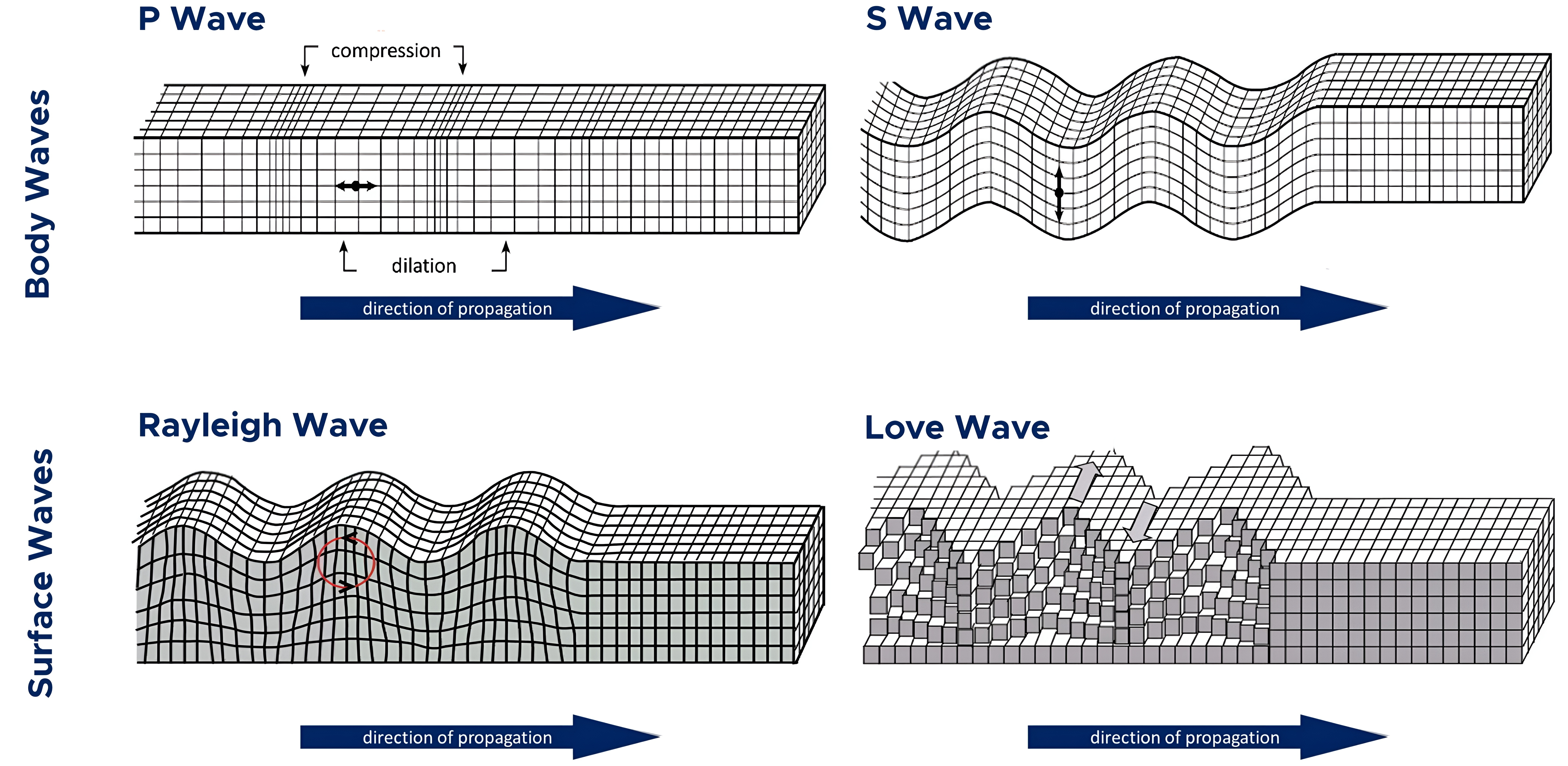Seismic Ambient Noises (Microtremor)
Seismic ambient noises are natural vibrations generated by natural sources (wind, ocean wave, etc) and artificial sources (human activity, industry activity, traffic) on the ground surface. The seismic ambient noises are categorized into two types, microseismic and microtremor. The microseismic (natural sources) have the natural frequency below 1 Hz and the microtremor (artificial sources) has natural frequency range between 1 Hz and 10 Hz. The seismic ambient noises, especially microtremor can be utilized for estimating a dynamic characteristics on a particular site in terms of dominant frequency (\(f_0\)), amplification factor and shear wave velocity upper 30 m (Vs30). The Figure 1 is an example of microtremor that has recorded from KTN network at MM station.

The microtremor data is acquired by using a single point of three components of the seismometer measurement, two horizontal components and one vertical component for 30 minutes of minimum recording (could be more, depending on the field condition). To obtain the dynamic characteristic parameters from the microtremor, then the Horizontal to Vertical Spectral Ratio (HVSR) method is utilizied. This methodology was popularized by Nakamura (1989) and then this method is also called Nakamura’s method. The microtremor survey is easier to be conducted and more low-cost than the seismic active survey, so the microtremor survey has been used widely to estimate local site effects by many researchers. To read more about the HVSR method, you may find my article here.
 Figure 2. Seismic Wave Types
Figure 2. Seismic Wave Types
Since the microtremor makes use of the natural waves (noises) on the ground surface, what seismic wave type contributes more to the microtremor? In this article, I would explain this question through some literature reviews.
Seismic Wave Types
In general, the seismic waves are categorized to two main types, Body Waves (BWs) and Surface Waves (SWs) as shown in Figure 2. The BWs are distinguished by two phase types, P-Wave and S-Wave, while the SWs are also divided into two types, Rayleigh Waves and Love Waves. These seismic waves have their own physical characteristics. The BWs are related to the earthquake phase, where the P-Wave travels faster than the S-Wave (Vp > Vs). The P-Waves can travel through the hard rock about Vp = 5.000 m/s and the soft soil Vp = 1.400 - 1.500 m/s while the S-Waves can only travel through solid earth layers about Vs = 3.000 m/s. The softer earth layer, the Vs is lower. The SWs travel on the ground surface that have the velocity lower than the BWs. The SWs are affected by transmission and reflection of P-Wave and S-Wave during an earthquake either on the vertical component or horizontal components. Naturally, the SWs are generated by natural waves such as ocean waves, wind and also artificial noises such as human activity, industrial activity, and traffic. The Rayleigh Wave travels in an elliptical motion, both vertically and horizontally. The particle of Rayleigh Wave moves opposite to the wave’s direction. The Love Wave travels side-to-side on the ground surface and it is dominated horizontally only.
Literature Reviews
Nakamura (1989) suggested that the microtremor is contributed by horizontal components of seismic waves because the spectrum of the ratio between horizontal and vertical components is quite similar with the transfer function of horizontal motion. Since the microtremor travels on a ground surface and by Nakamura’s findings, the Love Wave through the SH wave takes control of the horizontal motion.
The Bonnefoy-Claudet et al (2008) performed the simulation of seismic ambient noise wave by using ten models of horizontally stratified structures and computing efficiently the displacement and stress of dynamic Green’s functions for viscoelastic layered half space. The seismic ambient noise is computed by using wavenumber-based code developed by Hisada (1994,1995). The models are adjusted for different seismic parameters, such as seismic impedance contrast, seismic velocity contrast, etc. They tried to identify the correlation between a seismic ambient noise and composition of seismic wave types. They then analysed the effectiveness of the HVSR method to estimate a dominant frequency and amplification as a site response parameters. They concluded that the contribution of seismic wave types in the microtremor through the peak of HVSR depends on the seismic impedance contrast. The impedance contrast greater than 4 (high), the seismic ambient noise is dominated by Rayleigh and Love Waves, the impedance contrast between 3 and 4 (middle), the Love Wave is more contribute than the Rayleigh Wave, and the impedance contrast lower than 3 (low), the Love Wave is mainly dominated in the seismic ambient noise.
Conclusion
The precise estimation of seismic wave types in the microtremor is quite challenging because the natural seismic waves are saturated on the ground surface from any direction. The fundamental frequency of microtremor is also not unique based on the peak of HVSR. In some cases, the HVSR has several contrast peaks which correspond to a number of fundamental modes. It may vary depending on the impedance contrast between sediment and bedrock. Based on the information from Nakamura (1989) and the simulation from Bonnefoy-Claudet et al (2008), the Love Wave may contribute to the microtremor.
Sources
- Nakamura, 1989, A method for dynamic characteristics estimation of subsurface using microtremor of the ground surface
- Bonnefoy-Claudet et al, 2008, Effects of Love Waves on Microtremor HV Ratio